On Day 7 we cruised to Trier on the Moselle. This is an old, old city. It is the oldest city in Germany. It was officially founded by the Romans before 16 BC. Trier is the oldest seat of a Christian bishop north of the Alps But, Trier goes back even before the Romans. According to an entry recorded in the 12th-century collection of histories, legends, wars, records of the Archbishops of Trier, the city was founded by an Assyrian prince in 1200 BC placing the city’s founding legend 12 centuries before and independently of ancient Rome.
This is important to note because the Romans were the dominant influence in Trier since before the time of Christ.
Our first stop for our Orange Group city tour was the Trier Amphitheater. Built between 138-161 AD.This is the entrance to the Arena.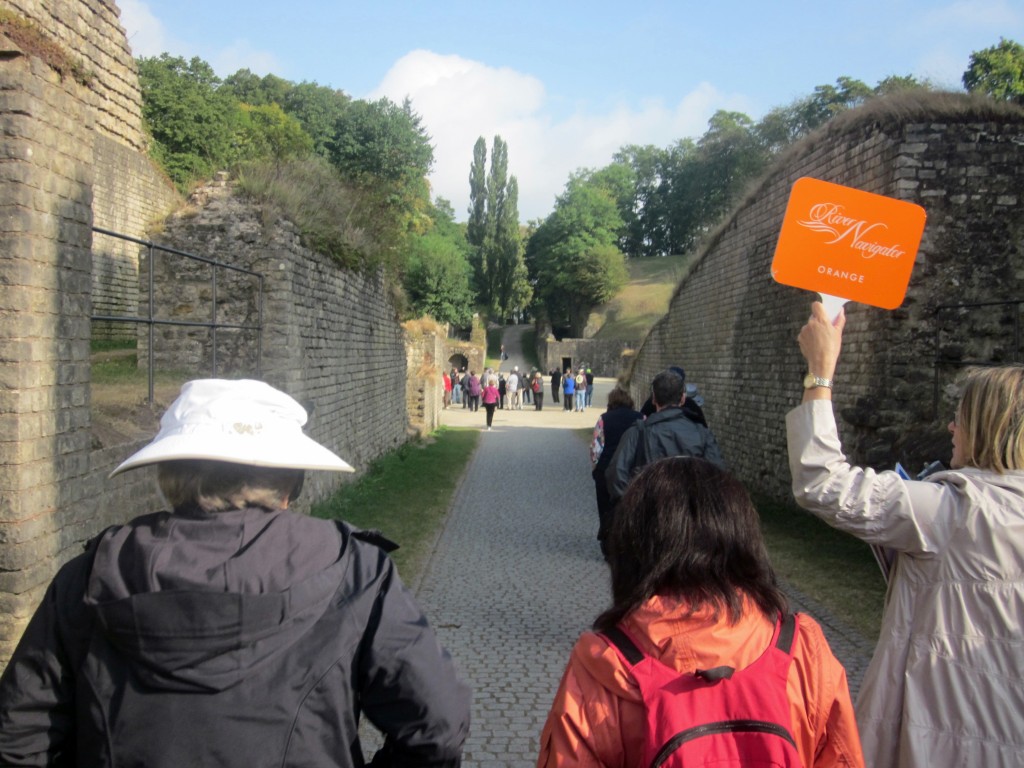 Picture this with stone “bleachers” and gladiators.
Picture this with stone “bleachers” and gladiators.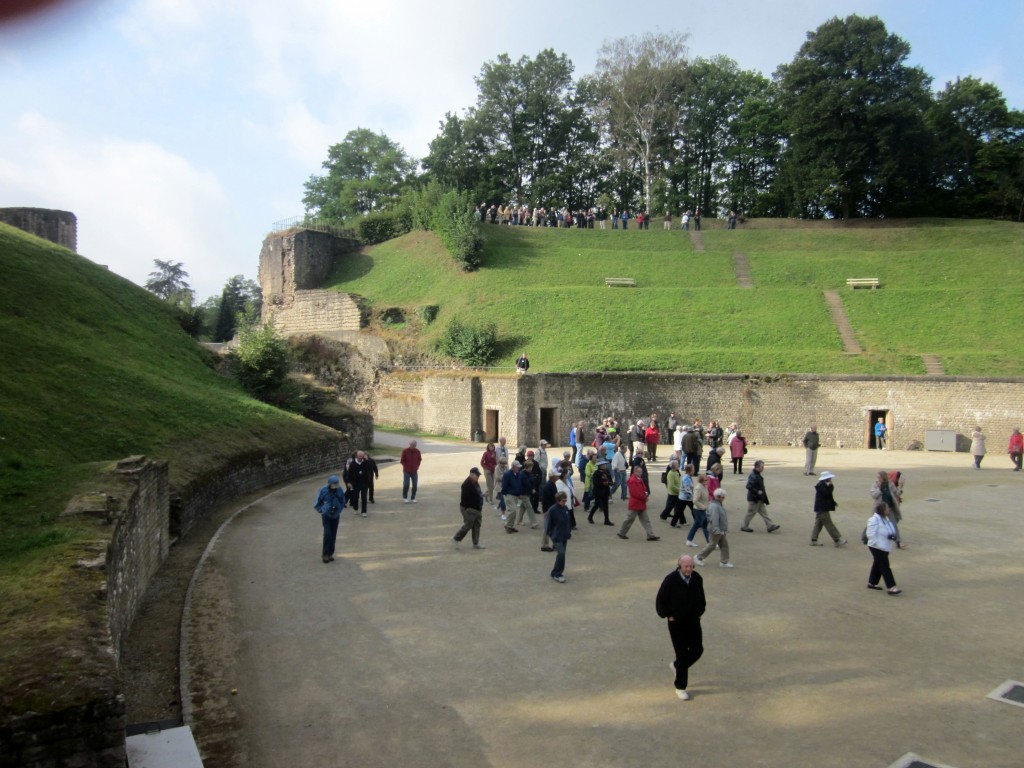 This is what it probably looked like:
This is what it probably looked like: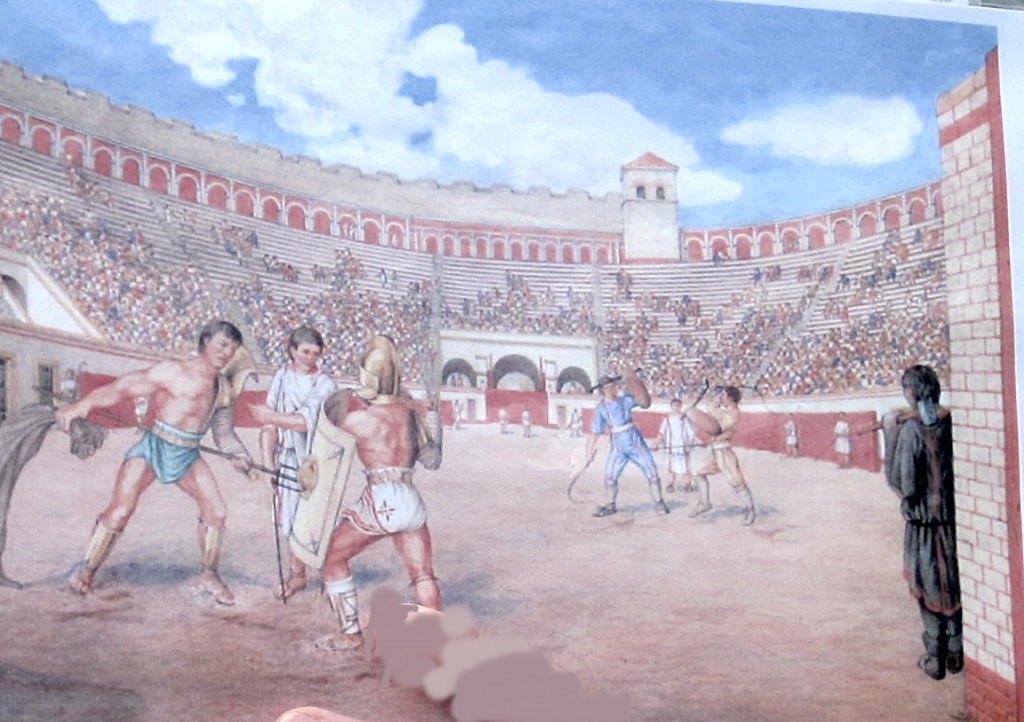 In spite of what we all think, gladiator fight were “refereed” affairs and were strictly controlled. Gladiators were like our sports stars. They were popular characters and some enjoyed a large following including the favors of some of the local noblewomen. Occasionally a gladiator would be seriously injured in a fight. When this happened, the guy in black on the right would bop him on the head and finish him off gracefully.
In spite of what we all think, gladiator fight were “refereed” affairs and were strictly controlled. Gladiators were like our sports stars. They were popular characters and some enjoyed a large following including the favors of some of the local noblewomen. Occasionally a gladiator would be seriously injured in a fight. When this happened, the guy in black on the right would bop him on the head and finish him off gracefully.
Here is a 21st Century Gladiator,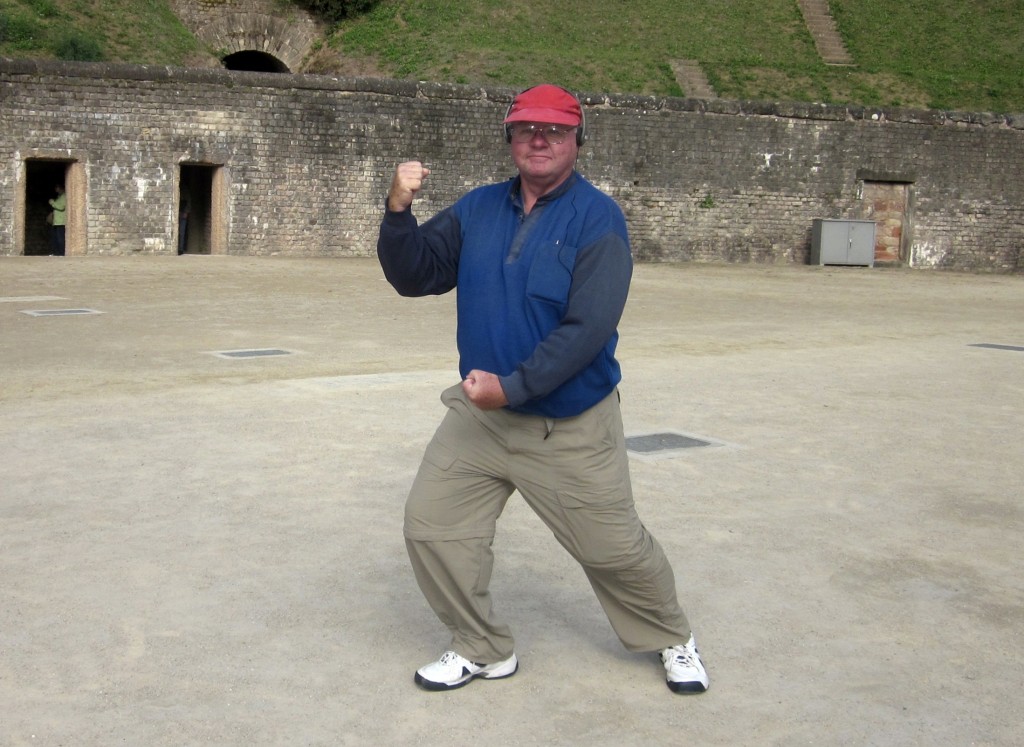 Note the gratings on the ground behind Sparticus. These are vents for a vast underground “cellar” where the contestants could wait. Kind of an ancient Green Room.
Note the gratings on the ground behind Sparticus. These are vents for a vast underground “cellar” where the contestants could wait. Kind of an ancient Green Room.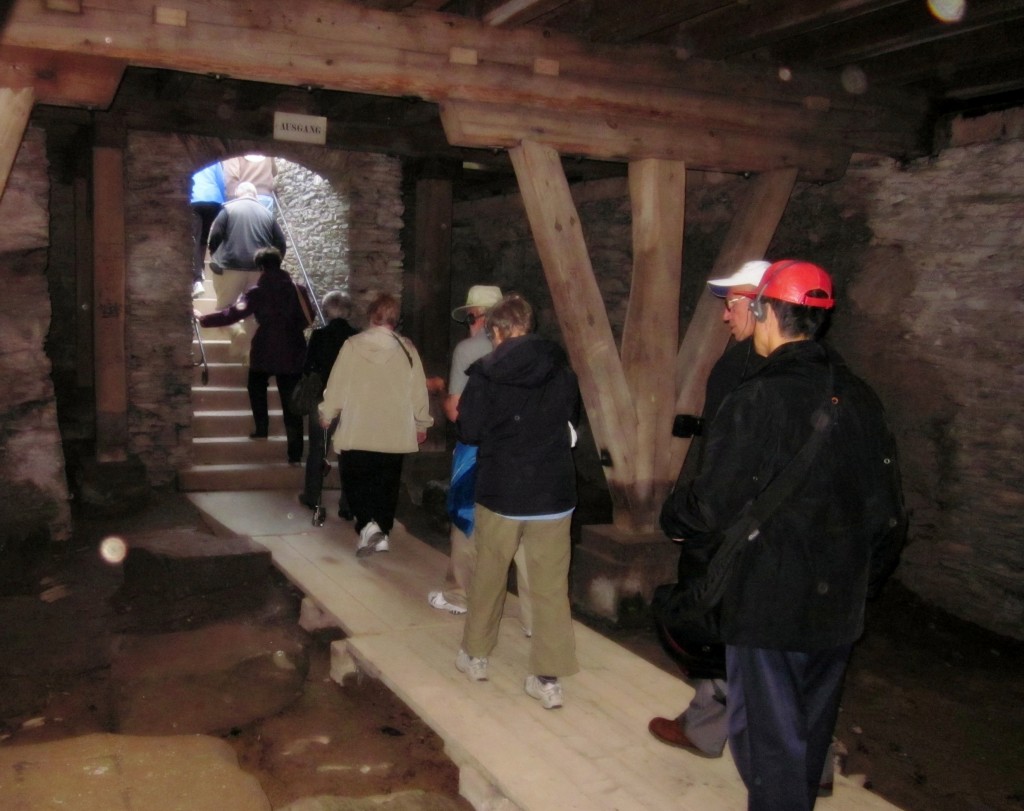
After leaving the Arena, we walked to see the The Basilica of Constantine built by the Roman Emperor Constantine (306–337 AD) at the beginning of the 4th century. Today it is owned and used as church by a congregation within the Evangelical Church in the Rhineland a united Protestant church. 
The basilica contains the largest ancient open hall from antiquity and is ranked a World Heritage Site. The room has a length of 220 feet, a width of 85 feet and a height of 108 feet.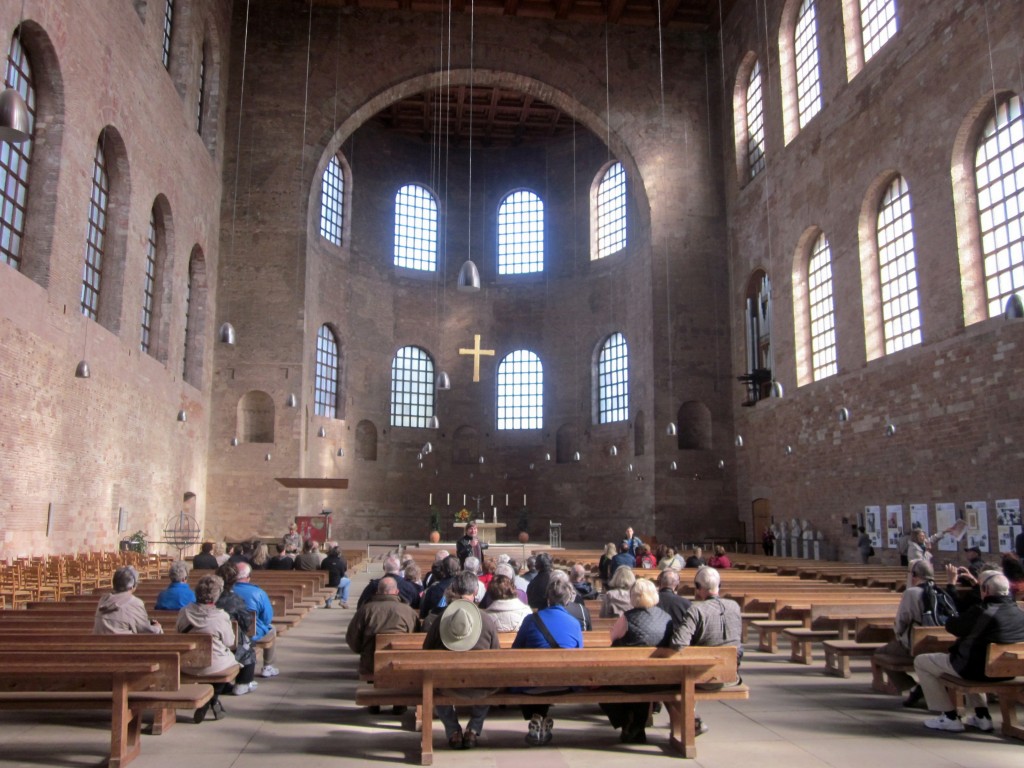 The Romans had great architects. They designed this building with a sneaky “fool the eye” trick: They made the apse windows smaller than those on the walls. This makes the apse seem deeper. Neat 2000 year old trick.
The Romans had great architects. They designed this building with a sneaky “fool the eye” trick: They made the apse windows smaller than those on the walls. This makes the apse seem deeper. Neat 2000 year old trick.
In June 1940 over 60,000 British prisoners of war, captured at Dunkirk and Northern France, were marched to Trier, which became a staging post for British soldiers headed for German prisoner-of-war camps. Trier was heavily bombed and bombarded in 1944 during World War II. This is what the basilica looked like then. It took years before it could be restored and the roof could be rebuilt.
This is the Porta Nigra. It was built between 186 and 200 AD as part of the original Roman city walls. The original gate consisted of two four-storied towers projecting as near semicircles on the outer side. A narrow courtyard separated the two gate openings on either side. This is the symbol of Trier and the start of the current pedestrian walkway. Note the little Choo Choo. These were the tourist trams we saw in many cities on our trip.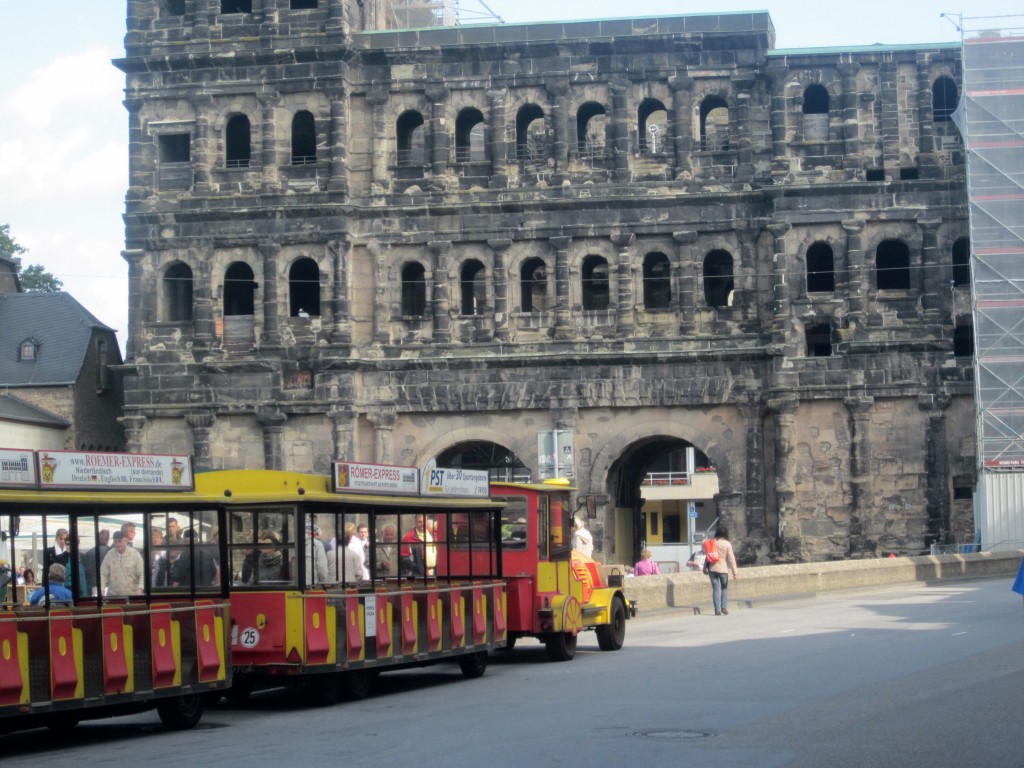
It probably looked like this in Roman times: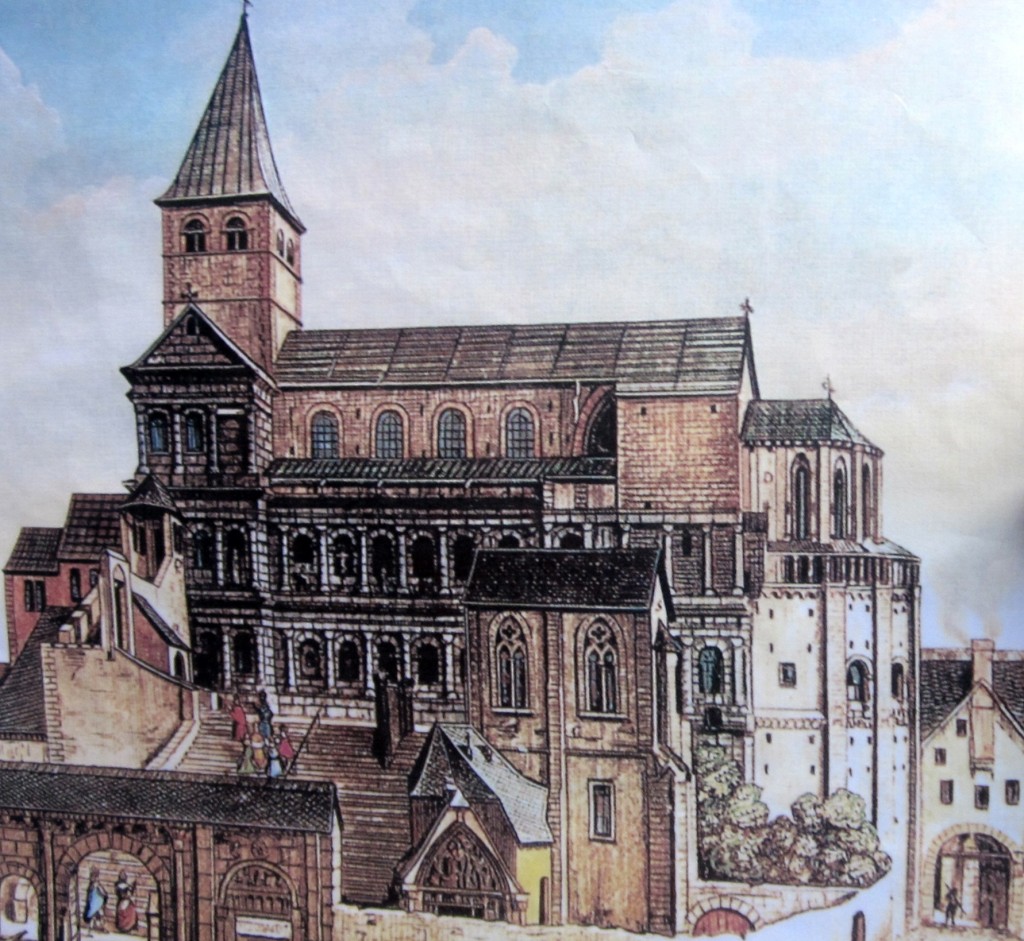 After 1028, the Greek monk Simeon lived as a hermit in the ruins of the Porta Nigra. After his death (1035) and sanctification, the Simeonstift monastery was built next to the Porta Nigra to honor him. Saving it from further destruction, the Porta Nigra was then transformed into a church:
After 1028, the Greek monk Simeon lived as a hermit in the ruins of the Porta Nigra. After his death (1035) and sanctification, the Simeonstift monastery was built next to the Porta Nigra to honor him. Saving it from further destruction, the Porta Nigra was then transformed into a church: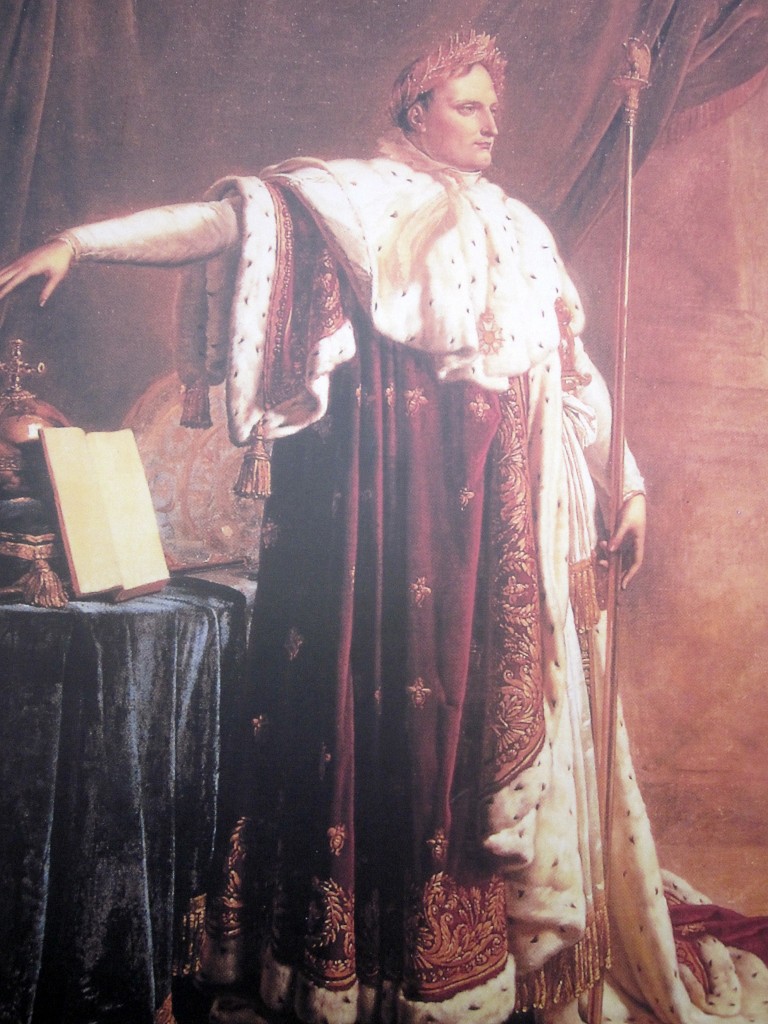 In 1802 Napoleon Bonaparte dissolved the church in the Porta Nigra and the monastery beside it along with the vast majority of Trier’s numerous churches and monasteries. On his visit to Trier in 1804, Napoleon ordered that the Porta Nigra be converted back to its Roman form. Only the apse was kept, and the eastern tower not rebuilt to its original height. Local legend has it that Napoleon originally even wanted to completely tear down the church. Allegedly, locals convinced him that the church had actually been a Gallic festival hall before being turned into a church. Another version of the story is simply that they told him about its Roman origins. It is claimed that this prevented the destruction of the building and persuaded Napoleon instead to convert the gate back to its original form.
In 1802 Napoleon Bonaparte dissolved the church in the Porta Nigra and the monastery beside it along with the vast majority of Trier’s numerous churches and monasteries. On his visit to Trier in 1804, Napoleon ordered that the Porta Nigra be converted back to its Roman form. Only the apse was kept, and the eastern tower not rebuilt to its original height. Local legend has it that Napoleon originally even wanted to completely tear down the church. Allegedly, locals convinced him that the church had actually been a Gallic festival hall before being turned into a church. Another version of the story is simply that they told him about its Roman origins. It is claimed that this prevented the destruction of the building and persuaded Napoleon instead to convert the gate back to its original form.
This is the Trier Roman Cathedral that houses the “Holy Robe of Jesus”
Here is a picture of the Robe held by our knowledgeable Trier city guide.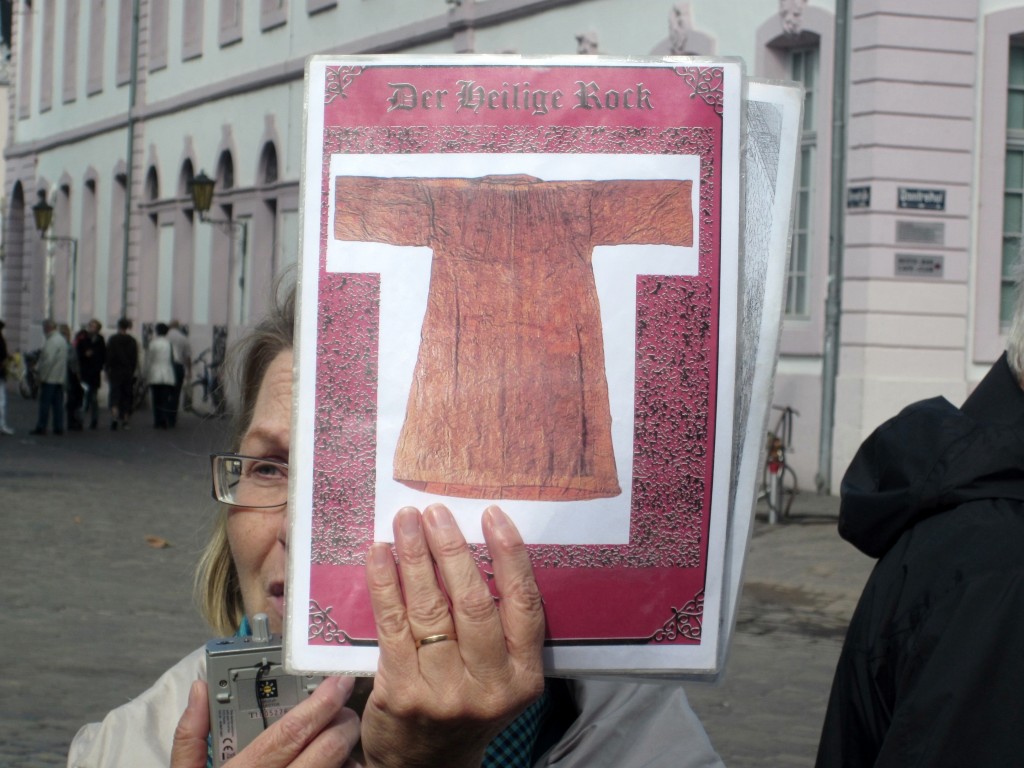
The Seamless Robe of Jesus (or “Holy Robe”) is the robe said to have been worn by Jesus during (or shortly before) his crucifixion. The relic is preserved in the Cathedral of Trier in Germany.According to the Gospel of John, the soldiers who crucified Jesus did not divide his tunic after crucifying him, but cast lots to determine who would keep it because it was woven in one piece, without seam.
According to legend, Helena, mother of Constantine the Great, discovered the seamless robe in the Holy Land in the year 327 or 328 along with several other relics, including the True Cross. According to different versions of the story, she either bequeathed it or sent it to the city of Trier, where Constantine had lived for some years before becoming emperor.
What do you think?
Here is the central Market Square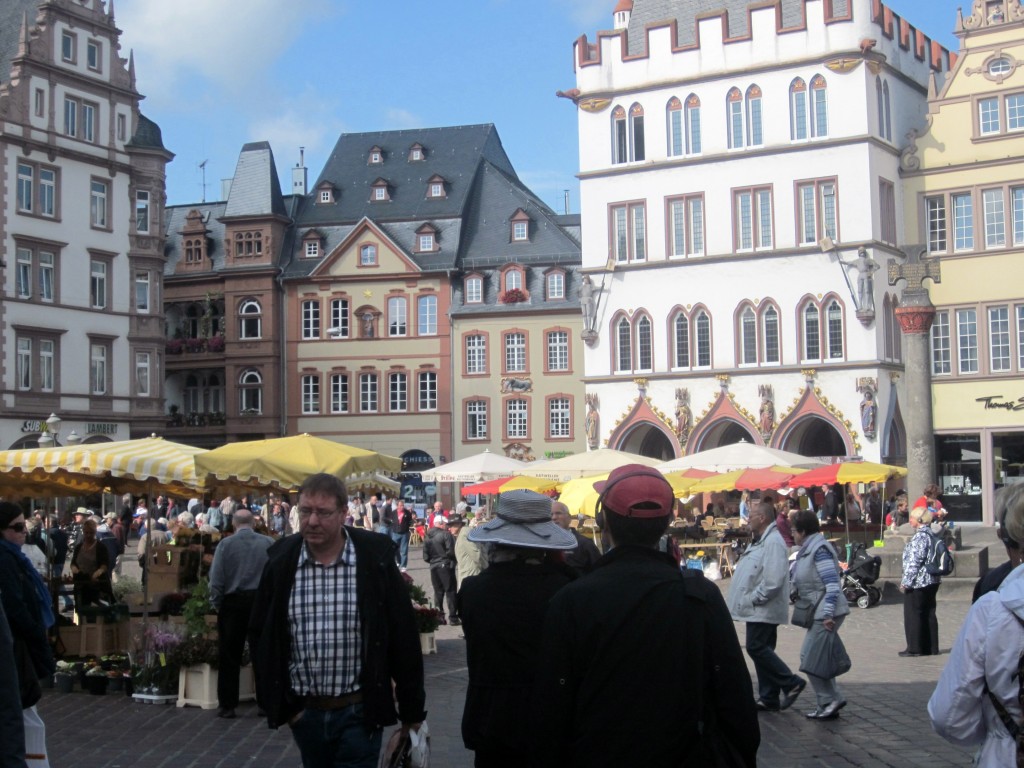 Nice old looking buildings, probably rebuilt after WWII
Nice old looking buildings, probably rebuilt after WWII
Here she is sniffing the fruit.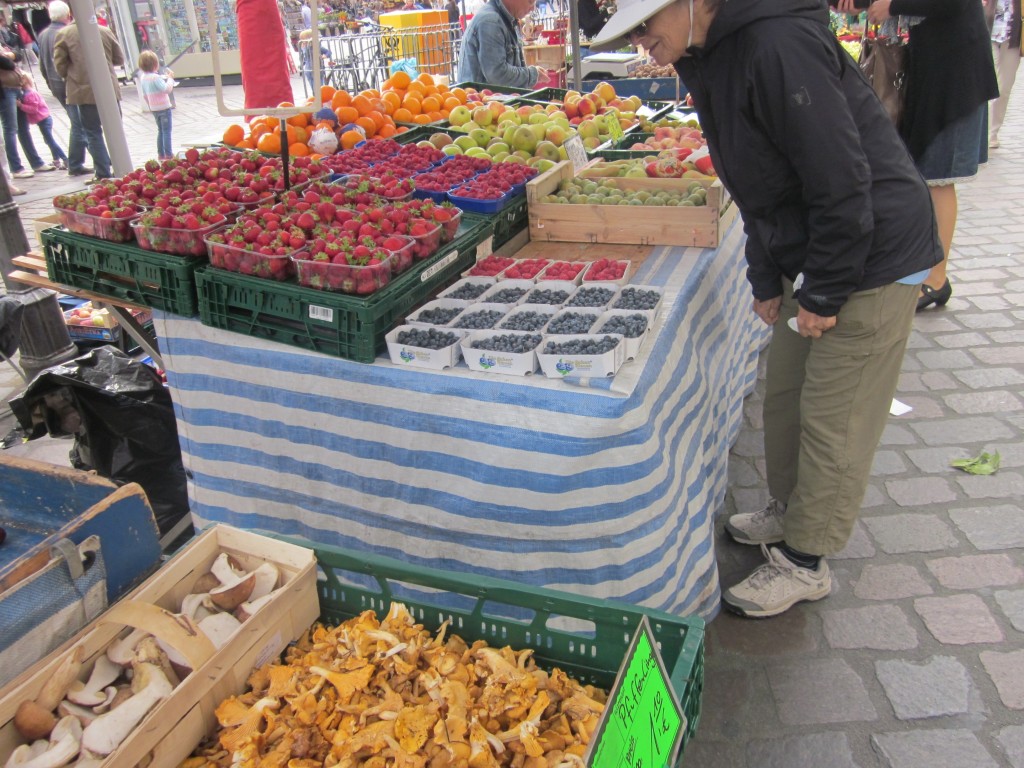
Every city has to have “Buskers”. How does he do it?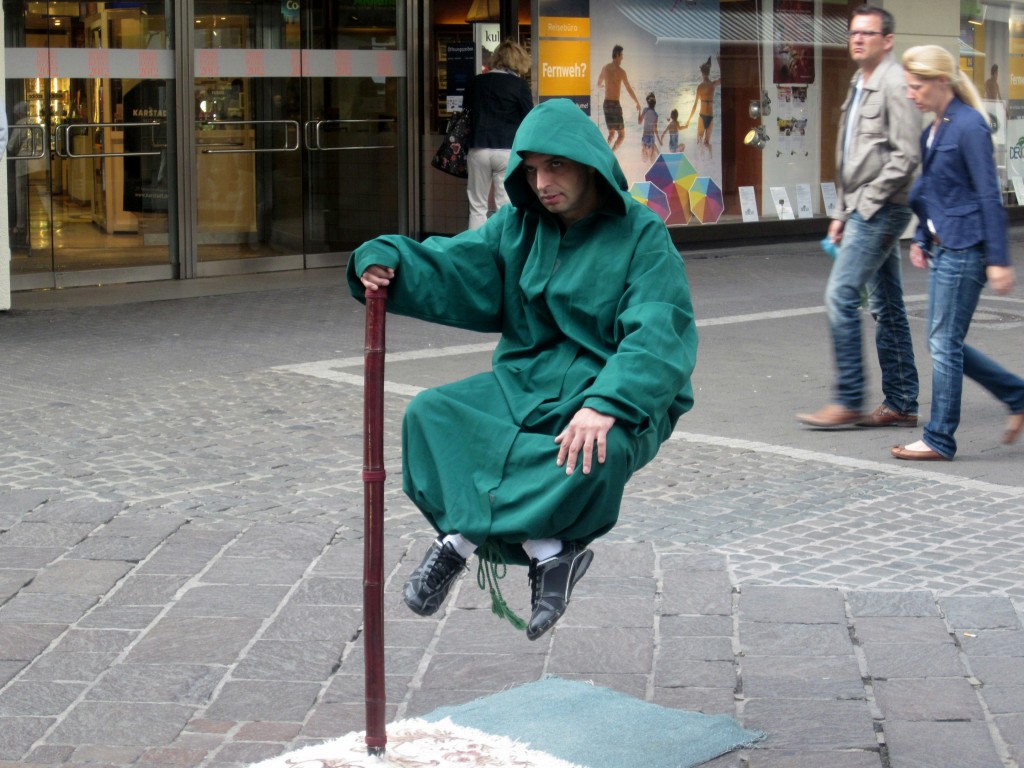
We eventually moved on and found Karl Mark’s house. The Karl Marx House is now a museum. It is the house in which Karl Marx was born in 1818. The museum currently receives about 32,000 visitors a year, about a third of whom are tourists from China, for whom it is one of the main attractions in Germany. Go figure…
The Karl Marx House is now a museum. It is the house in which Karl Marx was born in 1818. The museum currently receives about 32,000 visitors a year, about a third of whom are tourists from China, for whom it is one of the main attractions in Germany. Go figure…
Our last spot to visit was the Baths.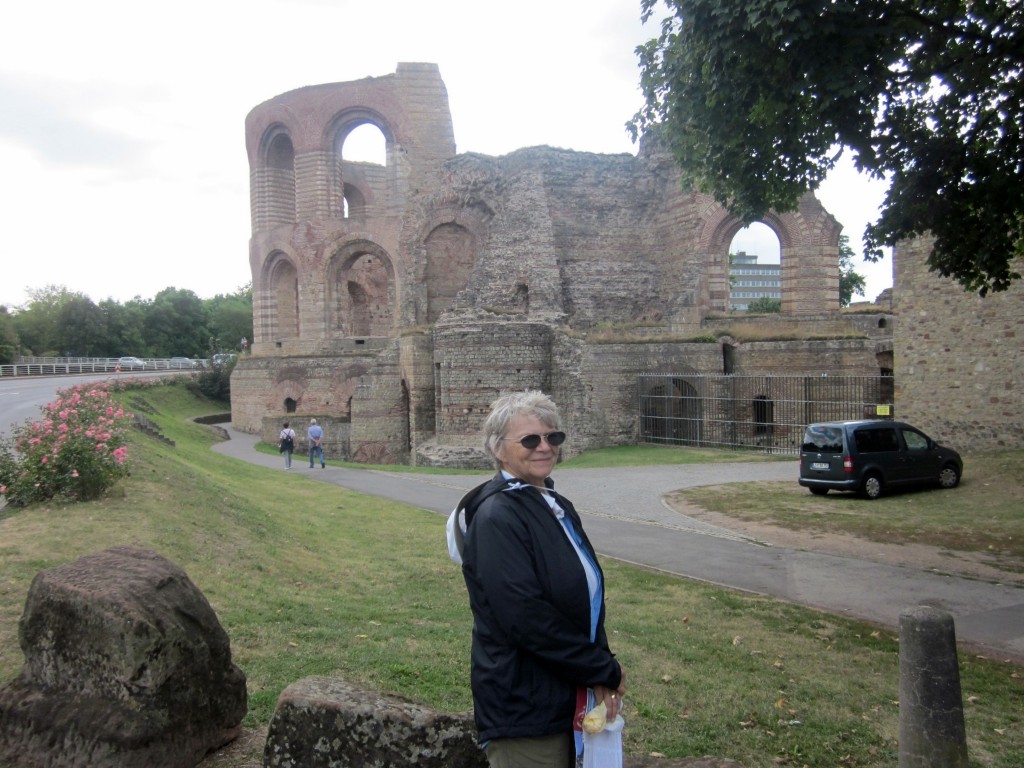 Going to the baths was an important part of Roman life: Over 1600 years ago, the Romans built one of the grandest and most impressive baths in the world: the Imperial Baths.
Going to the baths was an important part of Roman life: Over 1600 years ago, the Romans built one of the grandest and most impressive baths in the world: the Imperial Baths.
People bathed naked (not always separately), could engage in sports, sit in cold and hot baths, swim, get a massage, have the body hair removed by tweezers or wax, and be cleaned with the help of scrapers, pumice stone, or fermented urine. They could relax, gamble, do business, go to the hairdresser’s, libraries, reciting rooms, or pubs. The incoming cold water was heated in altogether six boiler rooms, four of which are visible in the 62 ft high ruins which later served as a part of the medieval city wall. The 104° F hot water was then conducted into the three semicircular pools for the bathers.
We reboarded our buses and drove to a local Winery and Restaurant for dinner.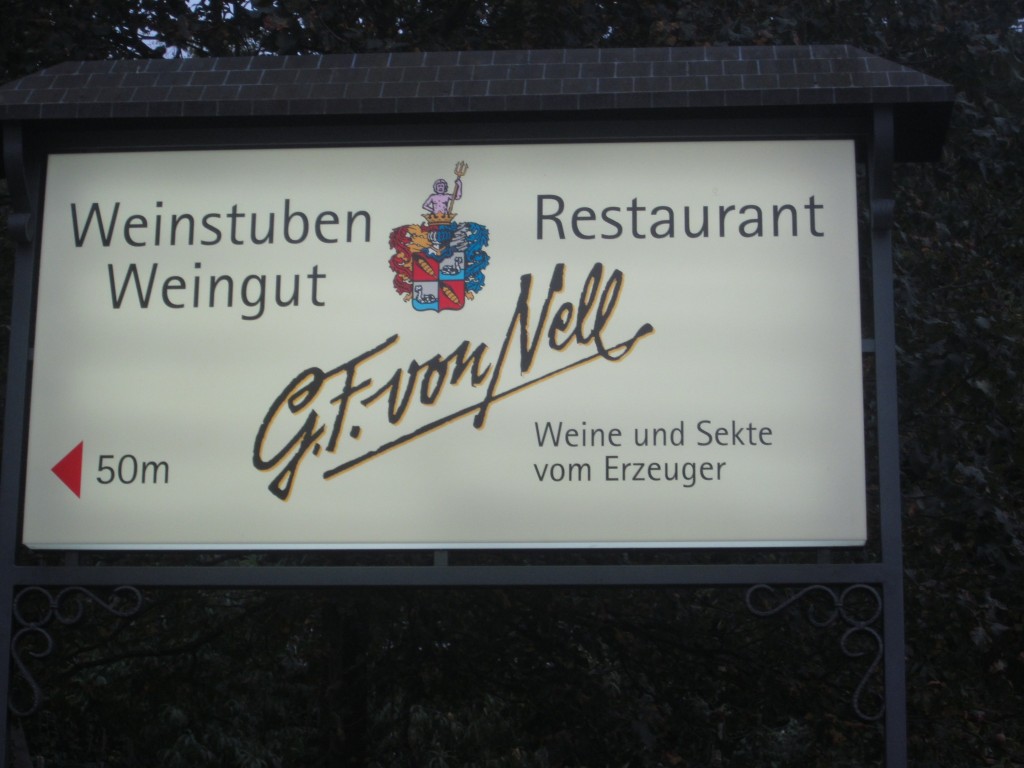
In the fermenting room, our hostess Regenia Rotwela explained the wine making process on her estate.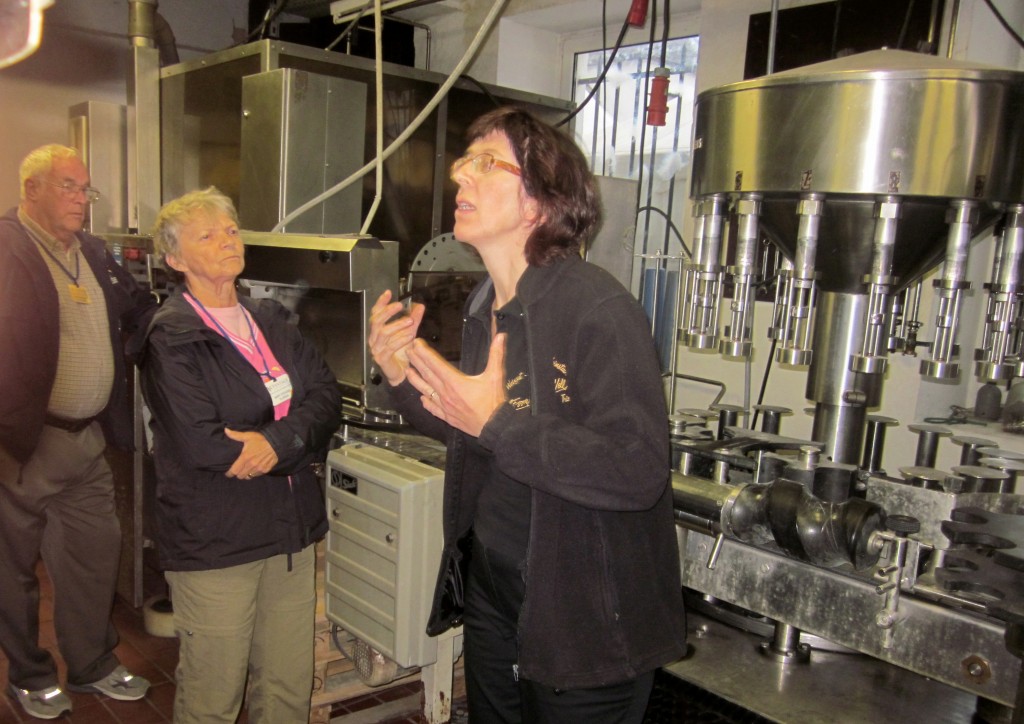 They have about 40 acres of vineyards which they cultivate, harvest, ferment, age, and bottle. They produce three types of Riesling wine: Dry, medium, and sweet depending on at what stage they stop the fermentation process. sooner for sweet, later for dry.
They have about 40 acres of vineyards which they cultivate, harvest, ferment, age, and bottle. They produce three types of Riesling wine: Dry, medium, and sweet depending on at what stage they stop the fermentation process. sooner for sweet, later for dry.
Once all the bottles are full in the fall, they have to wait until next year to do it again. Until then, it’s maintenance and cultivation and running their restaurant.
Aging barrels. Wine bottle storage.
Wine bottle storage.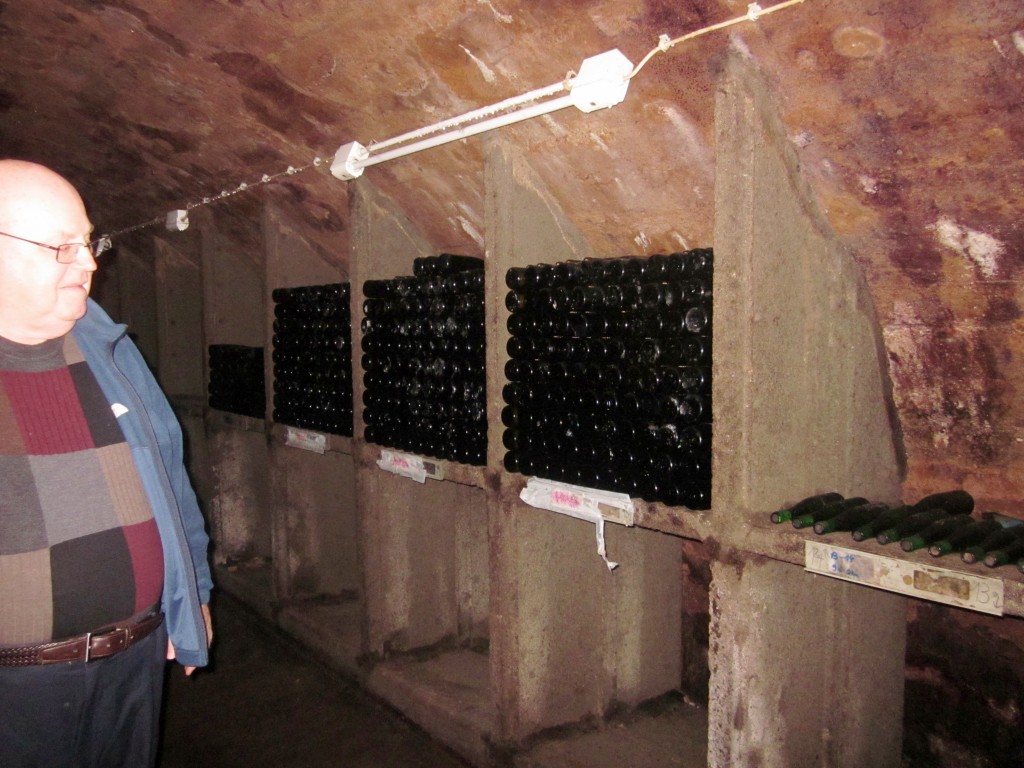 We had a delicious Pork dinner (what else?) in her restaurant. It was preceded by a Wine Soup which was unbelievably good. Of course, there must have been butter and/or cream in it. There was also plenty of all varieties their wine to enjoy with the our food. Unfortunately, no pictures – too sloshed, maybe?
We had a delicious Pork dinner (what else?) in her restaurant. It was preceded by a Wine Soup which was unbelievably good. Of course, there must have been butter and/or cream in it. There was also plenty of all varieties their wine to enjoy with the our food. Unfortunately, no pictures – too sloshed, maybe?
We returned to the ship in the rain and said good night to our 7th day.
